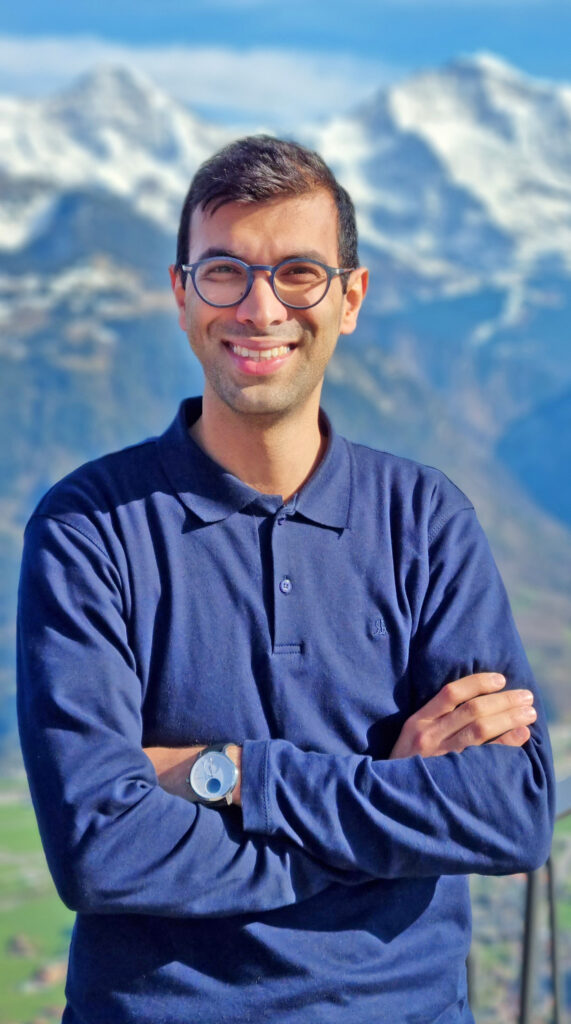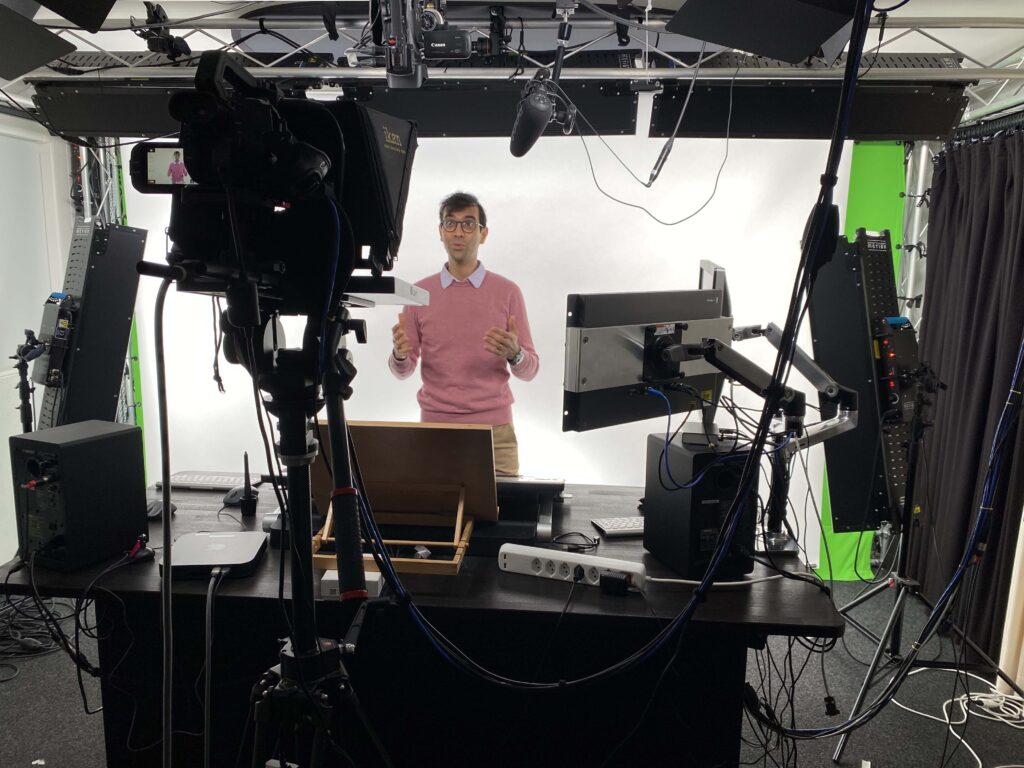
Professor Aryan Rezaei Rad joins the Department of Civil & Mineral Engineering as an Assistant Professor as of January 1, 2023.
CivMin spoke with Professor Rezaei Rad to learn more about his research direction, passion for teaching, and what attracted him to Toronto. As an almost blackbelt and polyglot (Persian, Azerbaijani, English, French and Gilaki), he has relocated from Lausanne, Switzerland to join our Department’s Structures group.

Originally slotted to start earlier, the move to Canada has been delayed by several months due to bureaucracy. Additionally, local consular services have been directed to immediate humanitarian and refugee efforts, further delaying matters. The entire Department maintained regular contact with Rezaei Rad, through video chats and coffee meetings, over the course of this period and all are happy to have our newest faculty member here at long last.
“We wholeheartedly welcome our newest faculty member to the Department,” says Chair Brent Sleep offering his greetings. “Students will benefit from the exciting new elements that Professor Rad brings to the Department in teaching and research in the timber structures and digital fabrication areas”. Join us in offering our newest professor a warm welcome to CivMin.”
Can you tell us a little about yourself as an introduction.
I am a Gilaki–Azeri Iranian, raised in the Caspian Sea Region and Alborz Mountain Range of Iran. Inspired by my engineer-architect grandfather, I fell head over heels in love with “Making Structures”. One thing led to another and I shaped my professional profile, as a Civil Engineer, at the interface of Structural Engineering, Digital Fabrication, and Computational Methods.
Thanks to the fresh perspective at École Polytechnique Fédérale de Lausanne (EPFL) and the Swiss National Centre of Competence in Research (NCCR) Digital Fabrication, I gained invaluable experience during my doctorate and postdoc fellowship to integrate nature-based construction materials (i.e. timber) with some bleeding edge technologies for design, fabrication, and computation.
My experience has led me to be passionate about trans-disciplinary research in structural engineering, research-industry knowledge and technology transfer, and teaching future civil engineers how to have the know-how to exploit sustainable design solutions to the fullest.
Here are some short videos related to my recent research activities:
- An algorithmic framework for integrated Computer-Aided Design and Computer-Aided Engineering in spatial timber plate structures (Here is the corresponding article).
- Structural engineering design and optimization using COMPAS for reciprocal systems with round woods (Here is the corresponding article)
- A FE-based simulation component developed within MANIS, a collaborative design tool for timber plate structures with wood-wood connection (Here is the corresponding article)
Could you explain the focus of your research?
I believe in trans-disciplinary research with a particular focus on multi-scale computational and experimental research in structural engineering, especially using bio-sourced materials i.e. timber and digital fabrication techniques and associated emerging concepts.
I will be launching a research group within the Department, called Sustainable Structural Systems (SuStrucSy), and working on problems mainly related to (I) the development of new design frameworks and principles for sustainable structural systems, (II) computational packages and (open-source) software development in structural engineering, (III) digital fabrication technologies (i.e. robotic/CNC machinery, new building geometry, and design of assemblies), and (IV) simulation-based science in structural engineering, together with experimental prototyping and 1:1 physical testing.

Why did you choose U of T?
Let me talk about the bigger picture first; Canada. I am indeed convinced that I can learn from Canada’s outstanding society and contribute to its remarkable open-minded environment, simultaneously, and on a reciprocal basis. On one hand, my areas of interest in research and teaching, as well as my background and the experience I gained over my professional and academic life supports this motivation. On the other hand, I’ve found my profile in line with the Canada’s short- and long-term supportive policies, its available resources, technological and infrastructural developments, and its future considerable potential, especially in the AEC sector.
From the personal perspective, well, {Canada, my spouse and I really like it}, {Canada, nature}, {Canada, diverse and inclusive}, {Canada, my French won’t be lost}, {Canada, I will still have time to make my peace with skiing(!)}, {Canada, some friends and relatives}, {Canada, one of my professional role models is Canadian}, {Canada, and so on and so forth}.*
*NOTE FOR READER: I formatted the text like that intentionally. I actually wanted to present my viewpoint in a “Computational thinking” way, where Canada is attributed to a specific characteristic inside one bracket. This is kind of similar to the concept of Sets and Dictionaries in Python Programming Language.
Now getting back to your question! Why U of T? I realized that there is a huge interest and enormous potential within the U of T’s policy and plan to support the research and education oriented towards sustainable structural systems and engineering. In addition, there are also a number of other reasons that made me choose U of T, namely the experienced team of professors with the spirit of open science and active collaboration, highly motivated students, diverse and multi-cultural academic environment, the fantastic infrastructural testing facility, impactful information and computational technology facility, and by the way, being located in the Golden Horseshoe region (!), which facilitates potential multi-stakeholder research-industry collaborations.
What are you most looking forward to in your new position?
As an Assistant Professor, I am most looking forward to Listening, and then putting the associated plans into action.
- Listening to society to maintain a diverse and inclusive group of scholars in the SuStrucSy team,
- Listening to the constraints, capabilities, and needs of the AEC sector to advance the technology readiness of research so as to stimulate its implementation in the real-world problems,
- Listening to comments and critiques [and not with half ear (!)] to conduct a meaningful research.
- Listening to our world’s future needs and training our students accordingly.
As a new professor, what one piece of advice would you give to new students?
For undergrad students: I think technological advancements have made human beings less patient. So, let’s be more patient, learn from every single step you take towards your objectives, enjoy it, and sometimes, question it.
For grad students: While you should be detailed-oriented and caught up with the details of your work, never lose sight of the big picture.
In addition, I always re-iterate what Hanif Kara, co-founder of AKT II and professor at Harvard University, says, and I quote “Tools are not innocent”!
What do you hope to accomplish in your new position/during your time at U of T Engineering?
This can be summarized in three phrases:
- With an Open Research attitude: Push back the frontiers of research in structural engineering by harnessing the emerging knowledge and technology in design, fabrication, and computation, together with bio-sourced materials.
- With an Open Education attitude: Offer inter-active educational activities (i.e. courses, workshops, MOOC, and training sessions), where each participant, will learn, think about, critically question, challenge, and have first-hand experience of the content.
- With an Open Innovation attitude: Dovetail research and teaching accomplishments with the demands of our professional society through establishing a consortium of academic and industrial partners.
What is the most memorable experience in your career so far?
I’d say being exposed to (and conducting) a wide spectrum of activities – from sound research and teaching to collaborating with with architects, roboticists, material scientists, and technicians – at EPFL (with its gorgeous campus) and the Swiss NCCR Digital Fabrication while enjoying the magnificent nature of “La Suisse Romande”!
Finally, is there anything fun/unusual/unexpected about yourself you’d like to share with our CivMin audience?
When I was nine years old, I qualified for the Brown Belt (3rd kyu) in the Shotokan style of Karate, taking me one step closer to the Black Belt. Moving to another city, new school, and also ribcage damage made me abandon my dreams for 松濤館!
By Phill Snel
